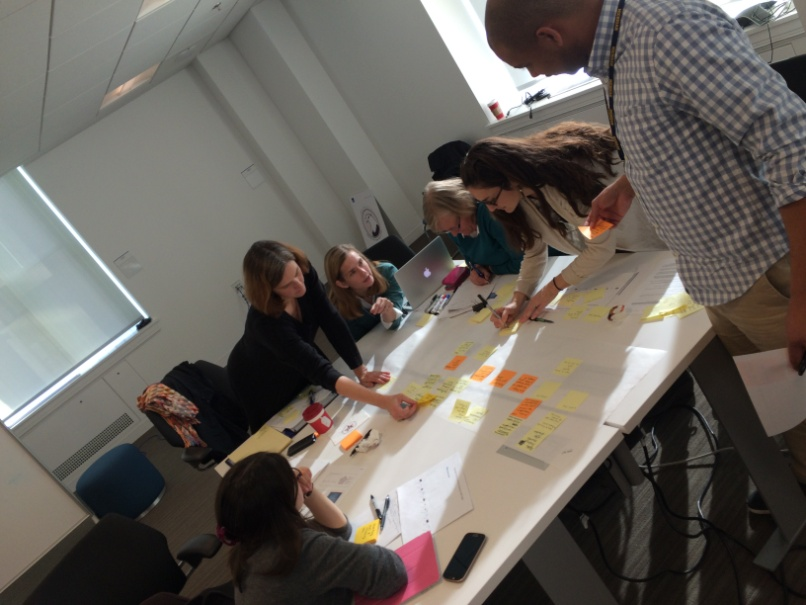
In the 2013 Second Open Government National Action Plan, President Obama called on Federal agencies to harness the ingenuity of the public by accelerating and scaling the use of open innovation methods, such as citizen science and crowdsourcing, to help address a wide range of scientific and societal problems.
Citizen science is a form of open collaboration in which members of the public participate in the scientific process, including identifying research questions, collecting and analyzing data, interpreting results, and solving problems. Crowdsourcing is a process in which individuals or organizations submit an open call for voluntary contributions from a large group of unknown individuals (“the crowd”) or, in some cases, a bounded group of trusted individuals or experts.
Citizen science and crowdsourcing are powerful tools that can help Federal agencies:
- Advance and accelerate scientific research through group discovery and co-creation of knowledge. For instance, engaging the public in data collection can provide information at resolutions that would be difficult for Federal agencies to obtain due to time, geographic, or resource constraints.
- Increase science literacy and provide students with skills needed to excel in science, technology, engineering, and math (STEM). Volunteers in citizen science or crowdsourcing projects gain hands-on experience doing real science, and take that learning outside of the classroom setting.
- Improve delivery of government services with significantly lower resource investments.
- Connect citizens to the missions of Federal agencies by promoting a spirit of open government and volunteerism.
To enable effective and appropriate use of these new approaches, the Open Government National Action Plan specifically commits the Federal government to “convene an interagency group to develop an Open Innovation Toolkit for Federal agencies that will include best practices, training, policies, and guidance on authorities related to open innovation, including approaches such as incentive prizes, crowdsourcing, and citizen science.”
On November 21, 2014, the Office of Science and Technology Policy (OSTP) kicked off development of the Toolkit with a human-centered design workshop. Human-centered design is a multi-stage process that requires product designers to engage with different stakeholders in creating, iteratively testing, and refining their product designs. The workshop was planned and executed in partnership with the Office of Personnel Management’s human-centered design practice known as “The Lab” and the Federal Community of Practice on Crowdsourcing and Citizen Science (FCPCCS), a growing network of more than 100 employees from more than 20 Federal agencies.

A group of Federal innovators, citizen science project managers, and scientists discuss the resources needed to implement the Lantern Live project, a crowdsourcing activity recently announced by the Department of Energy.
Using a suite of human-centered design tools like “journey maps,” “storyboards,” and “wireframes,” workshop participants provided input to each other, FCPCCS, and OSTP on the types of tools, resources, and networks needed to plan and implement citizen science and crowdsourcing projects. Participants also gained human-centered design skills to take back to their agencies.

Workshop participants document the process of planning and launching a citizen science project using a human-centered design tool known as journey mapping.
The Toolkit will help further the culture of innovation, learning, sharing, and doing in the Federal citizen science and crowdsourcing community: indeed, the development of the Toolkit is a collaborative and community-building activity in and of itself.
The following successful Federal projects illustrate the variety of possible citizen science and crowdsourcing applications:
- The Citizen Archivist Dashboard (NARA) coordinates crowdsourced archival record tagging and document transcription. Recently, more than 170,000 volunteers indexed 132 million names of the 1940 Census in only five months, which NARA could not have done alone.
- Through Measuring Broadband America (FCC), 2 million volunteers collected and provided the FCC with data on their Internet speeds, data that FCC used to create a National Broadband Map revealing digital divides.
- In 2014, Nature’s Notebook (USGS, NSF) volunteers recorded more than 1 million observations on plants and animals that scientists use to analyze environmental change.
- Did You Feel It? (USGS) has enabled more than 3 million people worldwide to share their experiences during and immediately after earthquakes. This information facilitates rapid damage assessments and scientific research, particularly in areas without dense sensor networks.
- The mPING (NOAA) mobile app has collected more than 600,000 ground-based observations that help verify weather models.
- USAID anonymized and opened its loan guarantee data to volunteer mappers. Volunteers mapped 10,000 data points in only 16 hours, compared to the 60 hours officials expected.
- The Air Sensor Toolbox (EPA), together with training workshops, scientific partners, technology evaluations, and a scientific instrumentation loan program, empowers communities to monitor and report local air pollution.
In early 2015, OSTP, in partnership with the Challenges and Prizes Community of Practice, will convene Federal practitioners to develop the other half of the Open Innovation Toolkit for prizes and challenges. Stay tuned!
Jenn Gustetic is Assistant Director for Open Innovation at the White House Office of Science and Technology Policy (OSTP).
Lea Shanley is a Presidential Innovation Fellow at the National Aeronautics and Space Administration (NASA).
Jay Benforado is Deputy Chief Innovation Officer in the Office of Research and Development at the Environmental Protection Agency (EPA).
Arianne Miller is Deputy Director of The Lab at the Office of Personnel Management (OPM).
Learn More:

